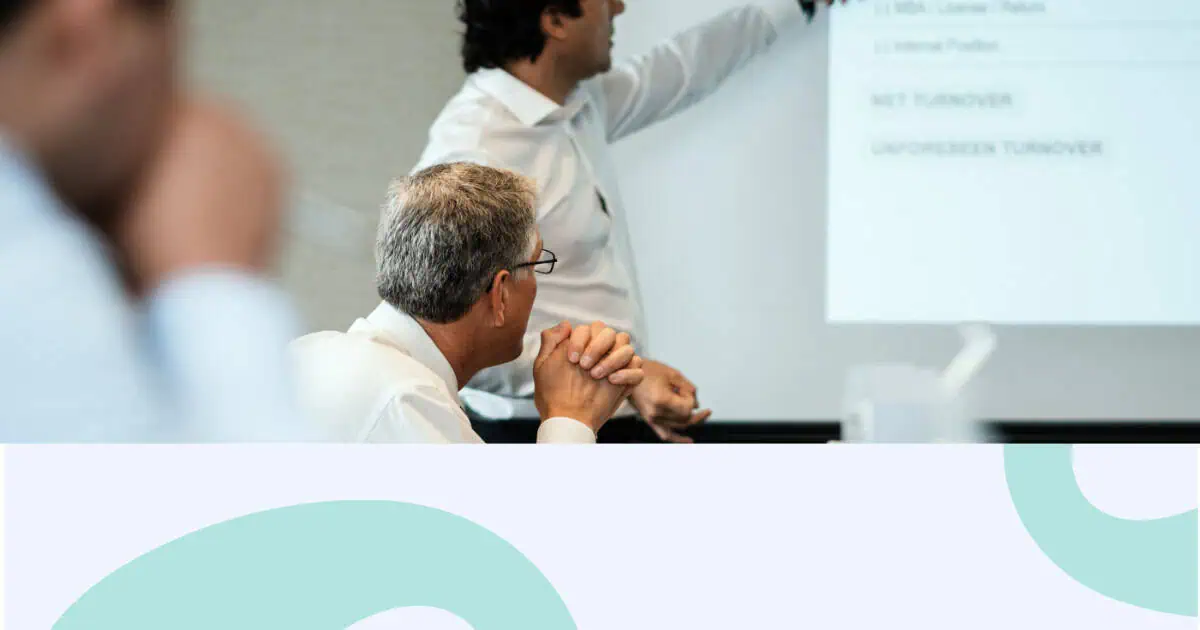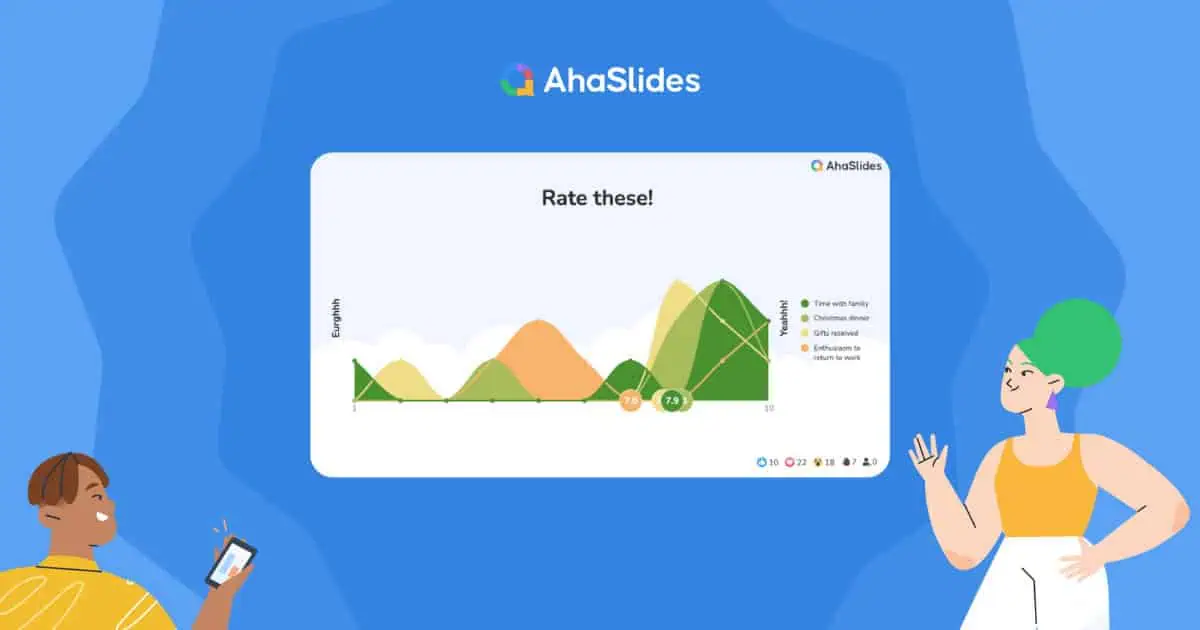Fl-ekonomija tal-attenzjoni tal-lum imħarrġa fuq TikTok, għandek madwar 8 sekondi biex tiġbed l-interess ta’ xi ħadd—inqas ħin minn ħuta tad-deheb. Jekk dan jidher skoraġġanti għal preżentazzjoni ta’ 5 minuti, hawn l-aħbar it-tajba: preżentazzjonijiet qosra huma l-arma sigrieta tiegħek.
Filwaqt li oħrajn iduru b'60 slide jaraw għajnejhom jiċċajtaw, int se twassal messaġġ iffukat li jibqa' magħna. Kemm jekk qed toffri preżentazzjoni lill-investituri, tħarreġ tim remot, tippreżenta riżultati ta' riċerka, jew tagħmel intervista għar-rwol tal-ħolm tiegħek, il-ħakma tal-format ta' 5 minuti mhux biss konvenjenti—ikun kruċjali għall-karriera tiegħek.
Din il-gwida tibbaża ruħha fuq ix-xjenza tal-preżentazzjonijiet, għarfien minn trejners professjonali li jagħtu mijiet ta’ sessjonijiet kull sena, u tekniki ppruvati minn kelliema tat-TED biex jgħinuk toħloq preżentazzjonijiet li jinvolvu, jipperswadu, u jħallu impatt dejjiemi.
Werrej
Għaliex Preżentazzjonijiet ta' 5 Minuti Jeħtieġu Approċċ Differenti
Riċerka min-newroxjentist John Medina juri li l-attenzjoni tal-udjenza tonqos b'mod sinifikanti kull 10 minuti waqt preżentazzjonijiet tradizzjonali. F'ambjenti virtwali, dik it-tieqa tiċkien għal 4 minuti biss. Il-preżentazzjoni tiegħek ta' 5 minuti tinsab perfettament f'dan il-punt ideali ta' ingaġġ—iżda biss jekk tiddisinjaha b'mod korrett.
L-ishma huma ogħla bi preżentazzjonijiet qosra. Kull kelma tgħodd. Kull slide hija importanti. M'hemmx ħin għal affarijiet żejda, l-ebda lok għal diverġenzi, u tolleranza żero għal żbalji tekniċi. Riċerka fl-industrija turi li 67% tal-professjonisti issa jippreferu preżentazzjonijiet konċiżi u ffukati fuq dawk twal—iżda l-biċċa l-kbira tal-preżentaturi għadhom iqisu d-diskors qasir bħala verżjonijiet konċiżi ta' dawk twal, li rarament jaħdem.
Kif Tagħmel Preżentazzjoni ta' 5 Minuti
Pass 1: Agħżel is-Suġġett Tiegħek bi Preċiżjoni Kirurġika

L-akbar żball li jagħmlu l-preżentaturi? Li jippruvaw ikopru wisq suġġett. Il-preżentazzjoni tiegħek ta’ 5 minuti għandha tindirizza idea ewlenija waħda—mhux tlieta, lanqas tnejn. Aħseb fiha bħala lejżer, mhux bħala floodlight.
Is-suġġett tiegħek irid jgħaddi minn dan it-test f'erba' partijiet:
- Punt fokali wieħed: Tista' tispjegah f'sentenza waħda? Jekk le, naqqas l-ispjegazzjoni.
- Rilevanza għall-udjenza: Isolvi problema li qed jiffaċċjaw b'mod attiv? Aqbeż informazzjoni li diġà jafu.
- Sempliċità: Tista' tispjegah mingħajr sfond kumpless? Żomm suġġetti kumplessi għal formati itwal.
- L-għarfien espert tiegħek: Żomm ma' suġġetti li taf sew. Il-ħin tal-preparazzjoni huwa limitat.
Għal ispirazzjoni, ikkunsidra dawn is-suġġetti ppruvati ta' 5 minuti f'kuntesti differenti:
- Settings professjonali: 3 strateġiji bbażati fuq id-dejta biex jitnaqqas it-telf tal-klijenti, Kif l-għodod tal-AI qed ifasslu mill-ġdid il-fluss tax-xogħol tagħna, Għaliex ir-riżultati tat-tielet kwart tagħna jindikaw bidla strateġika
- Taħriġ u tagħlim u żvilupp: Vizzju wieħed li jittrasforma l-prestazzjoni tat-tim remot, Il-psikoloġija wara l-punteġġi tal-impenn tal-impjegati, Kif tagħti feedback li fil-fatt itejjeb l-imġieba
- Kuntesti akkademiċi: Sejbiet ewlenin mir-riċerka tiegħi dwar is-sostenibbiltà, Kif il-midja soċjali taffettwa t-teħid ta' deċiżjonijiet fost l-adolexxenti, L-etika tal-editjar tal-ġeni fi tliet xenarji reali
Pass 2: Iddisinja Slajds li Jamplifikaw (Mhux Jaljenaw)
Hawn verità li tiddistingwi preżentaturi dilettanti minn dawk professjonali: Inti l-preżentazzjoni, mhux is-slajds tiegħek. Is-slajds għandhom jappoġġjaw in-narrattiva tiegħek, mhux jissostitwixxuha.
Il-mistoqsija dwar l-għadd tas-slajds
Riċerka minn esperti fil-preżentazzjonijiet tissuġġerixxi 5-7 slides għal diskors ta’ 5 minuti—bejn wieħed u ieħor slide waħda kull minuta b’ħin għall-ftuħ u l-għeluq tiegħek. Madankollu, il-kelliema tat-TED xi kultant jużaw 20 slide li javvanzaw malajr (10-15-il sekonda kull waħda) biex iżommu l-momentum viżwali. Dak li jimporta aktar mill-kwantità hija ċ-ċarezza u l-iskop.
Prinċipji tad-disinn tal-kontenut
- Test minimu: Massimu ta' 6 kelmiet għal kull slide. L-iskript tiegħek ta' 700 kelma għandu jingħad bil-kliem, mhux jintwera.
- Ġerarkija viżwali: Uża d-daqs, il-kulur, u l-ispazju abjad biex tiggwida l-attenzjoni lejn dak li huwa l-aktar importanti.
- Viżwalizzazzjoni tad-dejta: Statistika jew graff konvinċenti waħda għal kull slide tegħleb paragrafi ta’ spjegazzjoni.
- Disinn konsistenti: L-istess fonts, kuluri, u layouts iżommu l-professjonaliżmu.
Pro tip: Agħmel il-preżentazzjoni tiegħek interattiva billi tuża stħarriġ dirett, karatteristiċi ta' Q&A, jew kwizzijiet veloċi. Dan jittrasforma telespettaturi passivi f'parteċipanti attivi u jtejjeb b'mod drammatiku ż-żamma tal-informazzjoni. Għodod bħal AhaSlides jippermettulek tinkorpora dawn il-karatteristiċi bla xkiel, anke f'formati ta' 5 minuti.
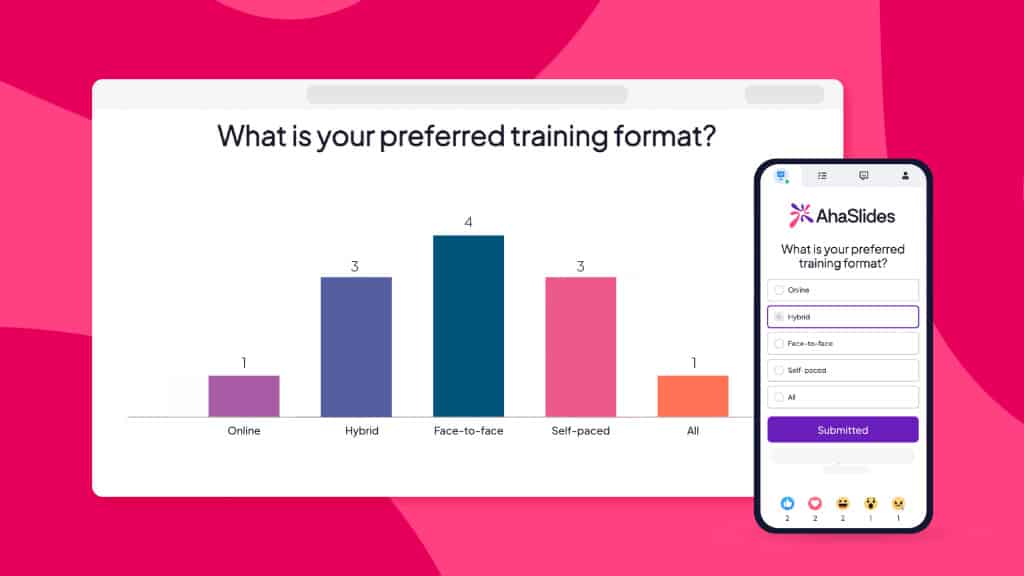
Pass 3: Immaniġġja l-Ħin bi Preċiżjoni Militari
Fi preżentazzjoni ta’ 5 minuti, kull sekonda għandha xogħolha. M’hemm l-ebda spazju biex titkellem bla waqfien jew tirkupra minn żbalji. Kelliema professjonali jsegwu din l-istruttura ppruvata:
Il-formula ppruvata tal-allokazzjoni tal-ħin
- 0:00-0:30 – Ganċ tal-ftuħ: Iġbed l-attenzjoni b'fatt sorprendenti, mistoqsija provokattiva, jew storja konvinċenti. Aqbeż introduzzjonijiet twal.
- 0:30-1:30 – Il-problema: Stabbilixxi għaliex l-udjenza tiegħek għandha tkun interessata. Liema sfida tindirizza s-suġġett tiegħek?
- 1:30-4:30 – Is-soluzzjoni/l-għarfien tiegħek: Dan huwa l-kontenut ewlieni tiegħek. Agħti 2-3 punti ewlenin b'evidenza ta' appoġġ. Aqta' kull ħaġa mhux essenzjali.
- 4:30-5:00 – Konklużjoni u sejħa għall-azzjoni: Saħħaħ il-messaġġ ewlieni tiegħek u għid lill-udjenza eżattament x'għandha tagħmel wara.
Aġġustament tal-preżentazzjoni virtwali
Tippreżenta mill-bogħod? Inkludi mumenti ta' involviment kull 4 minuti (skont ir-riċerka ta' Medina). Uża stħarriġ, itlob tweġibiet fiċ-chat, jew agħmel mistoqsijiet retoriċi. Iċċekkja l-angolu tal-kamera tiegħek (livell tal-għajnejn), żgura dawl qawwi minn quddiem, u ittestja l-kwalità tal-awdjo minn qabel. L-udjenzi virtwali huma aktar suxxettibbli għad-distrazzjoni, għalhekk l-interazzjoni mhijiex fakultattiva—hija essenzjali.
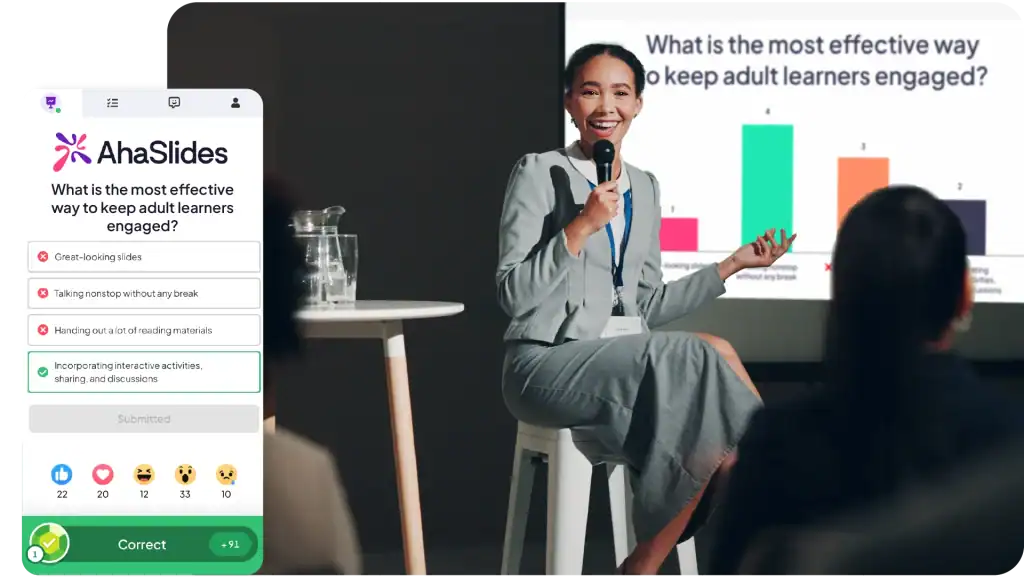
Pass 4: Twassal b'Kunfidenza Awtentika

Anke kontenut brillanti jfalli jekk ikun ikkunsinnat ħażin. Ara kif il-professjonisti jindirizzaw il-mument tal-verità:
Ipprattika bħallikieku l-karriera tiegħek tiddependi minnha (għax tista' tiddependi)
Ipprattika l-preżentazzjoni tiegħek ta’ 5 minuti mill-inqas 5-7 darbiet. Uża timer. Irrekordja lilek innifsek u araha lura—uġigħ iżda imprezzabbli. Ipprattika sakemm tkun tista’ twassal il-kontenut tiegħek b’mod naturali mingħajr ma taqra s-slajds. Il-memorja tal-muskoli tgħinek tgħaddi min-nerviżmu.
Tekniki ta' kunsinna li jisseparaw lid-dilettanti mill-professjonisti
- Varjetà vokali: Varja l-pass, it-ton, u l-volum. Agħmel pawża strateġikament għall-enfasi—is-silenzju huwa qawwi.
- Lingwaġġ tal-ġisem: Fil-persuna, uża ġesti miftuħa u ċċaqlaq b'għan. Quddiem il-kamera, illimita l-ġesti (dawn jamplifikaw) u żomm kuntatt mal-għajnejn mal-lenti.
- Stejjer: Inkludi eżempju jew aneddotu qasir u rilevanti. L-istejjer iżidu ż-żamma tal-klijenti b'22 darba meta mqabbla mal-fatti biss.
- Ġestjoni tal-enerġija: Qabbel l-enerġija tiegħek mal-messaġġ tiegħek. Entużjast għall-ispirazzjoni, imkejjel għal suġġetti serji.
- Prontezza teknika: Ittestja t-tagħmir 30 minuta qabel. Żomm pjanijiet ta’ riżerva għal problemi ta’ konnettività.
Is-sigriet tal-konnessjoni mal-udjenza
Aħseb fil-preżentazzjoni tiegħek bħala konverżazzjoni, mhux bħala wirja. Żomm kuntatt mal-għajnejn (jew ħares lejn il-kamera għal preżentazzjonijiet virtwali). Agħraf ir-reazzjonijiet. Jekk titfixkel, waqqaf ftit u kompli—l-udjenzi jaħfru l-awtentiċità, iżda mhux il-qari tas-slajds b'mod robotiku.
Ponta sigrieta: Ma tafx jekk il-preżentazzjoni tiegħek ta' 5 minuti tagħmilx impatt? Uża għodda ta' feedback biex tiġbor is-sentiment tal-udjenza minnufih. Jeħtieġ sforz minimu, u tevita li titlef feedback siewi tul it-triq.
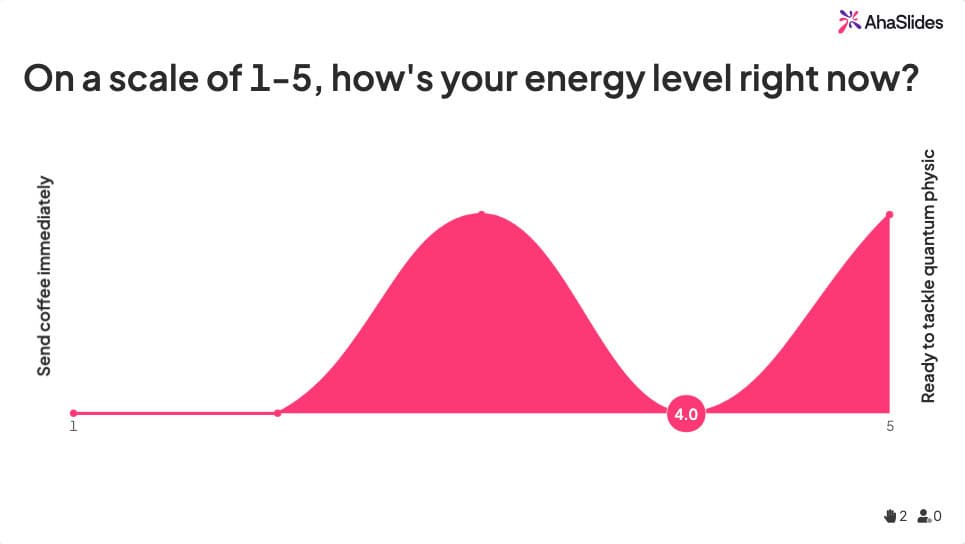
5 Żbalji Komuni Meta Tagħti Preżentazzjoni ta' 5 Minuti
Aħna negħlbu u naddattaw permezz ta' prova u żball, iżda huwa aktar faċli li tevita l-iżbalji tar-rookie jekk taf x'inhuma👇
- Tmexxija maż-żmien: L-udjenzi jindunaw. Dan jindika preparazzjoni ħażina u nuqqas ta’ rispett għall-iskeda tagħhom. Ipprattika biex tispiċċa fl-4:45.
- Slajds mgħobbija żżejjed: Slajds mimlijin test iġiegħel lill-udjenzi jaqraw minflok jisimgħu. Titlef l-attenzjoni tagħhom istantanjament.
- Prattika tal-qbiż: "Huwa biss 5 minuti" huwa ħsieb perikoluż. Formati qosra jeħtieġu AKTAR prattika, mhux inqas.
- Nipprova nkopri kollox: Il-fond jegħleb il-wisa'. Ħarsa waħda ċara li tirresona hija aħjar minn ħames punti li ħadd ma jiftakar.
- Tinjora l-udjenza tiegħek: Adatta l-kontenut għall-interessi, il-livell ta' għarfien u l-bżonnijiet tagħhom. Preżentazzjonijiet ġeneriċi qatt ma jirnexxu.
Eżempji ta' Preżentazzjoni ta' 5 Minuti
Studja dawn l-eżempji biex tara l-prinċipji fil-prattika:
William Kamkwamba: 'Kif użajt ir-riħ'
Din il TED Vidjow Tkellem jippreżenta l-istorja ta’ William Kamkwamba, inventur mill-Malawi li, meta kien tifel jesperjenza l-faqar, bena mitħna biex tippompja l-ilma u tiġġenera l-elettriku għar-raħal tiegħu. Ir-rakkont naturali u sempliċi ta’ Kamkwamba kien kapaċi jġib lill-udjenza, u l-użu tiegħu ta’ pawżi qosra biex in-nies jidħku huwa wkoll teknika oħra kbira.
Susan V. Fisk: 'L-Importanza li tkun Konċiż'
Din il vidjow għat-taħriġ joffri pariri utli għax-xjenzati biex jistrutturaw it-taħdita tagħhom biex jaqblu mal-format ta’ preżentazzjoni “5 Minute Rapid”, li huwa spjegat ukoll f’5 minuti. Jekk qed tippjana li toħloq preżentazzjoni ta' malajr "Kif tagħmel", ħares lejn dan l-eżempju.
Jonathan Bell: 'Kif Toħloq Isem tad-Ditta Kbir'
Kif jissuġġerixxi t-titlu, il-kelliem Jonathan Bell se jagħtik pass pass gwida dwar kif toħloq isem tad-ditta dejjiema. Huwa jasal dritt għall-punt bis-suġġett tiegħu u mbagħad jkisserha f'komponenti iżgħar. Eżempju tajjeb minn fejn titgħallem.
Fattura PACE: '5 Min Pitch at Startupbootcamp'
Dan il-video juri kif PACE Fattura, start-up li tispeċjalizza fl-ipproċessar tal-ħlas b'ħafna muniti, setgħet tressaq l-ideat tagħha lill-investituri b'mod ċar u konċiż.
Will Stephen: 'Kif ħoss intelliġenti fit-TEDx Talk tiegħek'
Bl-użu ta' approċċ umoristiku u kreattiv, Will Stephen's TEDx Talk jiggwida lin-nies permezz tal-ħiliet ġenerali tat-taħdit fil-pubbliku. A must-watch biex tfassal il-preżentazzjoni tiegħek f'kapulavur.
Lest li toħloq preżentazzjonijiet li tassew jinvolvuk? Ibda bl-għodod ta' preżentazzjoni interattivi ta' AhaSlides u ttrasforma l-preżentazzjoni li jmiss tiegħek ta' 5 minuti minn waħda li tinsa għal waħda li ma tinsiex.


